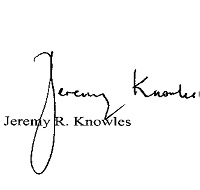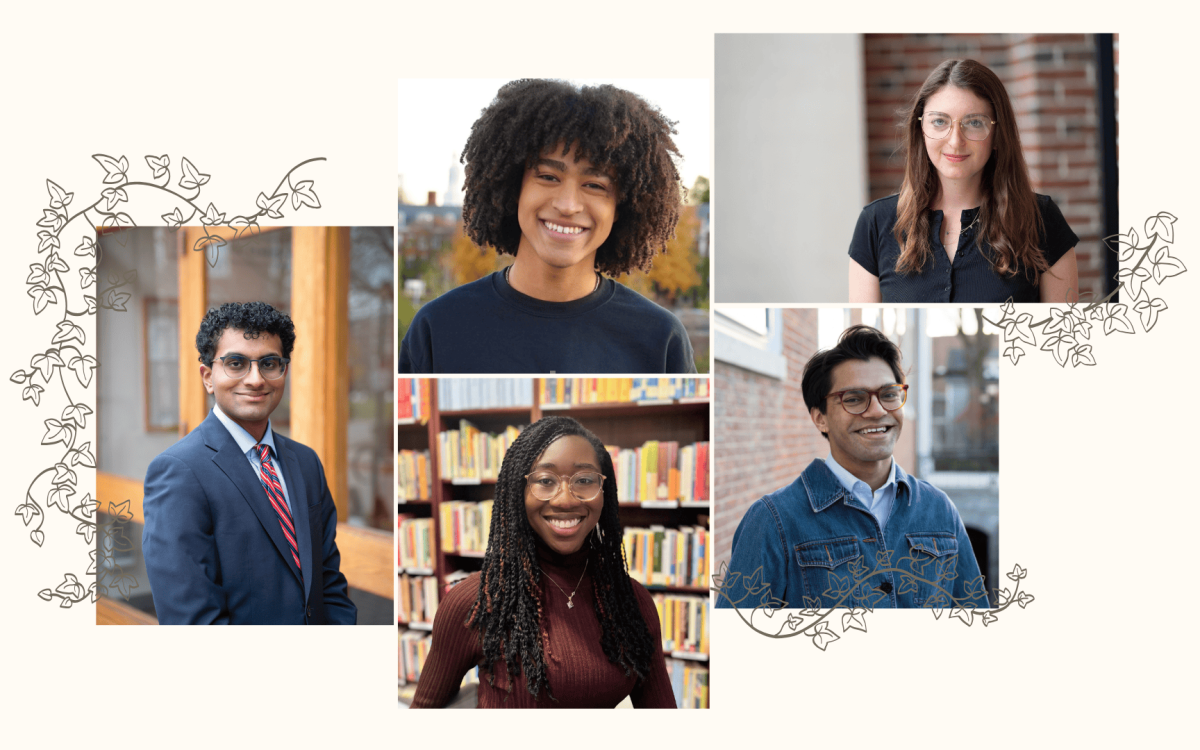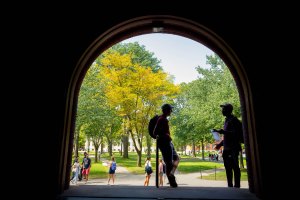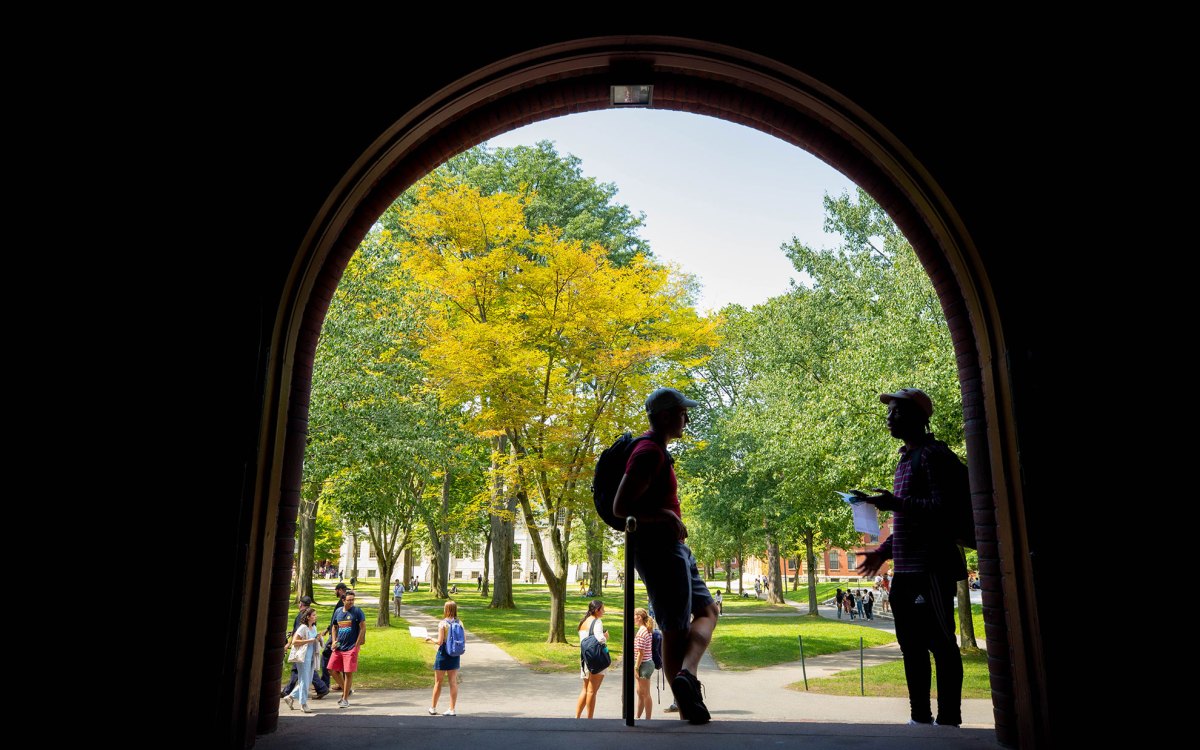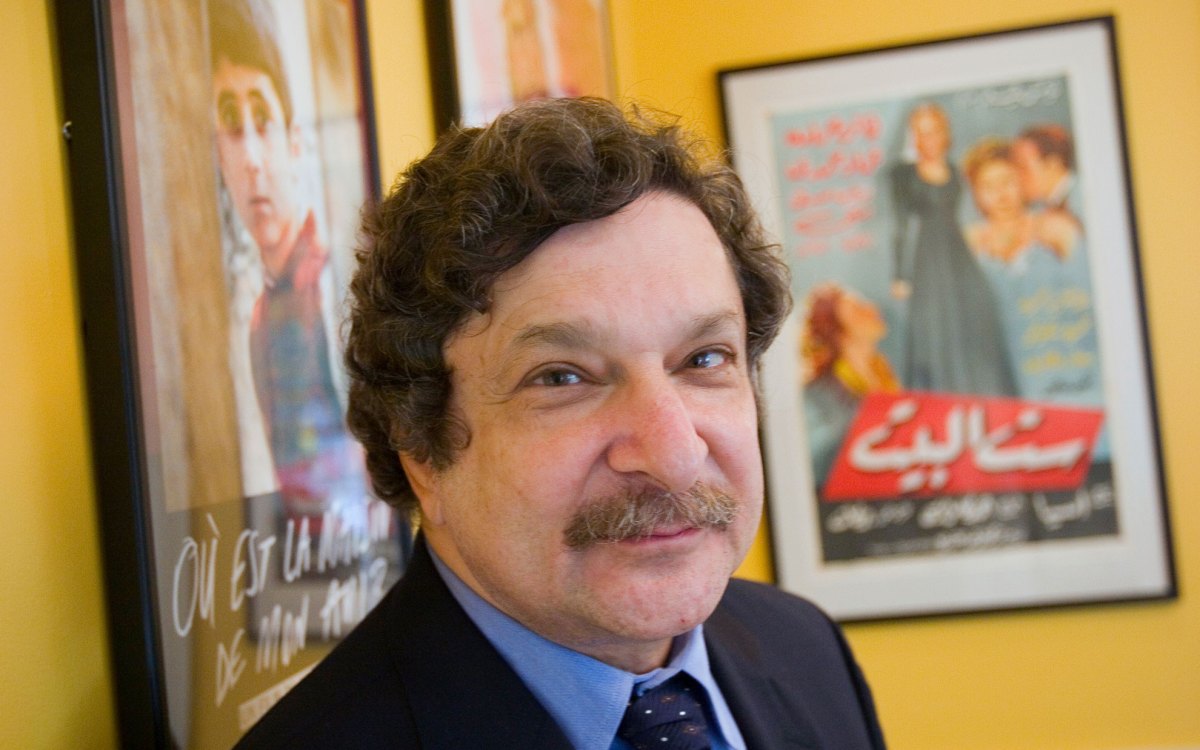Letter to the Faculty of Arts and Sciences: Preparing students for the future
Dean Jeremy R. Knowles cites curriculum, Faculty growth as key issues
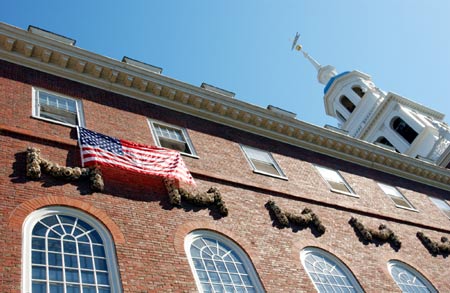
Dear Colleagues:
Our normal state of mild but productive discontent has allowed me for the past several years to pepper my Annual Letters with our plans and hopes during a period of relative peacefulness and an unusually benevolent economy. Today, Harvard faces – as does the nation – an era of new uncertainty.
In September, our confidence when we reflected upon the past and our presumptions when we contemplated the future, both changed. But for those of us in universities, the responsibility for examining and retelling the past, and the urge intellectually to reshape and enrich the future with new ideas and new discoveries, are unaltered. Even as time passes, as our habits shift, and as the scope and focus of our scholarly enquiry intensifies, the obligation of making sense of a changed world remains. Indeed, we shall be judged by how successfully we achieve that, both for our students and for ourselves.
Our role as a Faculty is both more urgent and more clear: to prepare our students for a future that, above all, will need wise leaders of an educated people. So it is that I start this year’s report with the area that will increasingly occupy us: what we teach and how we teach it.
The Curriculum
Re-examination of our curricular offerings is, of course, a continual activity. We worry about the balance between depth and breadth, and how to approach T.H. Huxley’s ideal that our students should “know something about everything and everything about something.” We concern ourselves with the balance between what is required and what is optional, and with the tension between the faculty’s sense of what should be learned and the student’s yearning for elective freedom. The pendulum swings now, as it always has. (When Eliot became President in 1869 almost the whole curriculum was mandated. Yet by the end of his presidency forty years later, required courses had all but disappeared. Then under Lowell, the concentrations were introduced and a rather more structured curriculum returned.) Continual scrutiny of what is taught and learned – by each of us in our courses, and by all of us collectively – prevents staleness, and we see new pedagogical opportunities and want to enjoy them. Yet we must be careful not blithely to add new programs, nor simply to let attractive initiatives increase the faculty’s burden. We must plan our classroom offerings more holistically, and better understand the faculty resources that each requires.
First, the Faculty is well aware of our goal dramatically to expand the freshman seminar program. Dean Susan Pedersen has enumerated the many compelling reasons for doing this, and I am delighted both that more seminars are being offered, and that more are being led by members of the faculty. Yet there were still nearly four hundred freshman applicants this past September who could not be accommodated at all. Our students clearly recognize the value and attractiveness of this program. When the Faculty discussed freshman seminars a year ago, one word – passion – occurred repeatedly, as many colleagues remembered their pleasure and that of their students studying a subject that excited them. The educational value of such an encounter early in an undergraduate’s time at Harvard is surely very great. As we invite more faculty to contribute, Dean Pedersen is exploring the recruitment of colleagues from other Faculties who are often enthusiastic to teach freshmen in the College in this satisfying setting.
Second, the Faculty urged three years ago an increase in the range of Core courses in nearly all of the Core areas, to ensure a decent level of student choice. Since we require that all our undergraduates take these courses, we want to be sure that their tastes and interests are engaged. Related to this question is the balance between the fraction of undergraduate courses that we mandate and the fraction that our students elect, and I expect that we may soon want to return to the original suggestion of the Core Review Committee in 1997 to reduce the number of required Core courses from eight to seven.
Third, we must rethink what is essential for each of the undergraduate concentrations; and fourth, we must define what is the heart of our graduate programs.
Since faculty time and availability is the single most precious and limited commodity, I hope that we can move away from the sense that each of these four curricular elements has to compete with the others. In a more ideal world, we should see all four as part of our collective obligation, rather than allowing the curriculum to become the accidental consequence of individual faculty benevolence. If each department defines its essential course offerings for both concentrators and non-concentrators, the needs of its graduate program, and its commitment to freshman seminars and to the Core, we shall have taken a modest step towards the best use of our teaching resources. I am glad that this exercise has already begun in many departments.
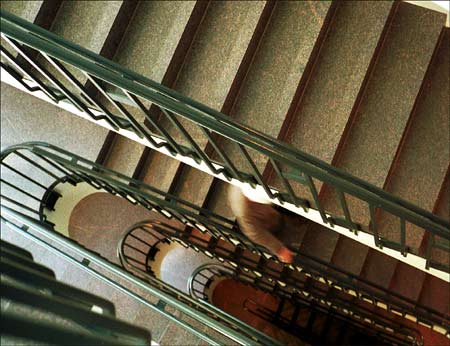
The need to produce rolling multi-year curricular plans to improve the quality and coherence of our offerings is obvious from the above, yet there are several other powerful reasons why a change from our sometimes libertarian habits is overdue. First, is the evident success of last year’s move to making four- and five-year guaranteed offers of support to our incoming graduate students. In nearly all of the disciplines where this change has been made, the greater attractiveness of our offers has been reflected in a higher yield of the most desired candidates. But the quid pro quo for offers of guaranteed support to graduate students is that we be sure that – at the appropriate time in their careers for training as teachers – intellectually relevant teaching opportunities exist for them. To make such guarantees, we must have a stable curricular schedule, particularly of the courses that need teaching fellows.
The second pragmatic reason for planning our curricula several years ahead is the desire to improve the leave arrangements for the senior faculty. As I said at the Faculty Meeting last October, this is not primarily a financial issue, but it is very much a matter of teaching resources. For it would be irresponsible to implement a new leave policy that endangered the curriculum. During the coming term, a group of colleagues from the Offices for Undergraduate Education and for Academic Affairs, and from the Graduate School, will be asking departments to produce three-year plans (with provisional identification of who would teach what) so that we can determine where the curriculum would be at risk. Some rethinking of what is most important in the concentration, some scrutiny of course offerings, and a reasonably equitable distribution of teaching responsibility, will – I trust – allow us all to benefit. Finally, the existence of multi-year curricular plans will allow us much more readily to determine where there is a particular need for new faculty. Curricular stress is only one piece of this puzzle, of course, and it would be improper to grant new faculty positions to departments only on the basis of average enrollments per faculty member, for example. But the need for new faculty will be more easily determinable when we see how different departments manage to mount their essential offerings.
In writing the above I have focused on the benefits to us, the members of the faculty. But we shouldn’t forget that our students will also gain. Today, students choose their courses by battling with the bewildering uncertainty of Courses of Instruction, often not knowing if a particularly enticing course will ever be offered again, or not knowing whether a particular requirement can only be met immediately. That is one reason why many undergraduates feel that they must ‘get their requirements out of the way,’ and end up with early curricular indigestion from a menu of mostly large courses. Surely they don’t always have to eat their spinach first?
The Faculty
Faculty Growth. Over the past three years, we have seen what I trust will be a continuing trend towards a larger Faculty. In 1998-99, there were 603 professors, of whom 432 were tenured and 171 untenured. Today, there are 637, of whom 442 are tenured and 195 untenured. Provided that we slightly increase this pace of senior faculty recruitment, and provided that we continue to replenish the untenured ranks with outstanding young colleagues, my concerns about increasing the size of the Faculty will largely evaporate. In 2000-2001, twenty-four new senior colleagues joined the Faculty, twelve of whom are women. Particularly with respect to the latter number, I should like to recognize how much Dean Drew Faust has helped in providing several of our faculty colleagues with attractive affiliations with the Radcliffe Institute. Already, the Institute has become a positive force in recruitment by enriching the intellectual environment in Cambridge.
I have recently had several helpful conversations with all department chairs about our processes for making tenured appointments and how they might be improved. As I said in my letter of some years ago, our practices should serve the goal of bringing the most talented and promising scholars and teachers to Harvard, rather than merely follow the sometimes burdensome habits of earlier times. With the encouragement and support of the President, I should like to ensure that we seek future colleagues as their careers are developing, and then maximize the chances of persuading them to join us. There seems to be general agreement that we should identify promise, and the phrase ‘development stage’ was used in these discussions because we all know that different disciplines tend to have different and characteristic development patterns for the production of mature work. The colleagues we most want to find are those whose work is mature (at whatever age it is produced), yet not complete, in the sense of being likely to develop in new and exciting ways. Thus, I hope, we shall assure and enhance the long-term health of the Faculty.
For appointments at the untenured level, I note with pleasure that the involvement of the Office for Faculty Development seems to be leading to a higher success rate in our hiring of stellar junior colleagues. This trend obviously augurs well for the future.
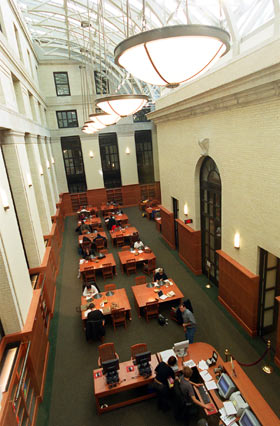
Senior Faculty Leave Policy. The case for improving our senior faculty leave policies has moved from the desirable to the compelling, and I should like to achieve several things by doing this even before the size of the Faculty has substantially increased. First, we shall improve the scholarly lives of our colleagues (and thus, I trust, improve the educational experience of our students). Second, by adopting a policy that moves us closer to those of our peer institutions (several of which are more generous than ours), I expect to increase our success in recruiting new colleagues and to become less susceptible to predatory action by rival universities (even though our colleagues will deservedly continue to face “star” offers from elsewhere). Third, we shall bring our senior faculty leave policies closer to the more liberal arrangements that we put in place for untenured faculty in the humanities and nearly all the social sciences a few years ago. (Indeed, I have heard from colleagues who have felt – though only in this respect, I trust – disadvantaged by being promoted to tenure!) Finally, as I have discussed above, improving the senior faculty leave policy creates an opportunity to ensure that we make multi-year rolling curricular planning a routine part of our activities.
The Resources Committee has discussed two possibilities: first to increase the frequency of paid senior faculty leaves, and second to increase the overall frequency of leaves. I believe that we should plan on implementing the first proposal, and allow senior faculty to be eligible for a paid sabbatical term after every six terms in residence (rather than the current twelve). I also believe that we should delay consideration of the second proposal for several years, both until the effects of the first change have been absorbed and a new steady state has been reached, and until the Faculty has grown more significantly. Improving the sabbatical policy first will make it easier for departments to establish effective curricular plans and to avoid the greater uncertainty that would follow from an increased leave frequency. So I hope that during this spring, departments will be able to map the ‘essential’ courses for their undergraduate concentrators and graduate students, the service courses they offer, and the expected number of Core courses and freshman seminars, against the roster of available faculty. Our challenge will be to develop procedures that will ensure a continuing linkage between curricular planning and the faculty leave approval process, without being hard either on individuals or on whole departments when the curriculum seems to be compromised. There are also important transitional issues surrounding the introduction of a new policy that have yet to be worked out. But if everyone is responsive to the need for defined curricular plans, I trust that we shall be able to introduce the new leave policies in 2003-2004.
One consequence of a more liberal leave policy will be a more frequent discontinuity in the faculty leadership of departments, of administrative units such as research centers, and of Ph.D. committees, standing committees, and faculty search committees. Here, we shall need to rely on the willingness of every faculty colleague to be an occasional pinch hitter. As the redoubtable Dr. Johnson observed: “The future is purchased by the present; it is not possible to secure distant or permanent happiness but by the forbearance of some immediate gratification.”
Space Planning
Beyond the curriculum, the second major planning exercise involves the space that we shall need as we enlarge the faculty. It is relatively rare that institutions are in a position to look ahead for several decades and plan for whole clusters of new buildings to accommodate growth. Thanks to the financial successes of the past few years we can now do that, even as we continue to meet immediate needs by renovation and adaptation of our existing buildings. The overarching opportunity is, of course, the University’s ownership of more than a hundred acres of land in Allston, the disposition and development of which will – directly or indirectly – benefit all of us. But within the Faculty of Arts and Sciences, we now have the chance to shape a plan for the longer term, and to ensure that we create attractive and functional spaces for our academic programs.
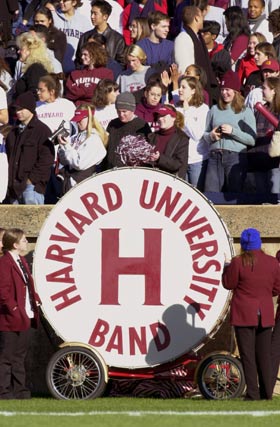
Last year, we retained a planning firm, Skidmore, Owings, Merrill of Chicago, to examine the North Precinct (which is the area bounded by Hammond Street, Oxford Street, Kirkland Street, and Kirkland Place). More than twelve departments of the Faculty (including most science departments, three social science departments, and some from the humanities) look to this space as they think about the growth of their faculty numbers in the coming years. Most of these departments will not be able to expand much, or to provide enough offices, laboratories, and classrooms, unless new spaces are built. In consultation with the chairs of each of these departments the planners have compiled our academic space needs, and Dean Nancy Maull and others have met with department faculty members to refine these goals. Even if there were no financial constraints (which there certainly will be!) it would take at least a decade to fulfill these plans. For there are difficult sequencing questions, the most obvious of which is the need first to construct an underground garage to liberate the land that is currently used for surface parking. Our consultants have now resolved the phasing issues, and – following ongoing discussions with our neighbors – permits will soon be sought to construct a multi-level underground garage south of Hammond Street. We hope to be able to start building this garage in the late spring. Both Dunbar (a small concrete block structure on Hammond Street) and parts of the Cyclotron building will need to be removed as construction begins, and Palfrey House (which was the farmhouse for all this land in times long past) will be moved to a more comfortable position on Hammond Street. I aim soon to appoint faculty committees to guide the planning of the first two major new buildings: the ‘North Lab’ and the ‘West Lab.’ For a while, we wondered whether there was any way of ‘getting there, from here,’ but I am grateful that our consultants successfully untied what was a fearsome knot, and produced a possible plan for the development of this area. Ultimately, we shall be able to replace the unwelcoming fence that blights the northern edge of the campus with a graceful and pleasantly porous border with our residential neighbors.
I discuss our other major capital projects towards the end of this letter.
Having mentioned these plans to improve our environment and what we do within it, it would be uncharacteristic of me not to sound a cautionary note. The economic uncertainties of last year became a more obvious downturn after the events of September. As a Faculty, we are not immune from the movements of the national economy or from those of the financial markets, since they affect both the performance of our endowment and the success of our fundraising for new projects. Into all our plans, therefore, opportunities must be built for prudent course-correction if our financial situation demands it. Already, the Corporation has signaled its concern by announcing that the pay-out from endowment funds will rise by only two percent next year, and that we should plan for similarly low increases in the future. After the heady rises of recent years, this projection tells us – unambiguously – to plan carefully. Over the past decade, the proportion of the Faculty’s budget that is provided by income from the endowment has risen from twenty-seven percent to forty-one percent, and our overall financial position is correspondingly more sensitive to the pay-out rate. We shall need to be more careful in establishing new programs and in expanding existing ones than we have been in the recent past. It is much harder to curtail a new activity or to reduce a recently-granted benefit than it is to delay a new building or a major renovation until times are easier. So we must be hesitant in sanctioning new long-term commitments, and be prepared to postpone major capital projects if we cannot afford them.
The College and Undergraduate Education
Last year, I referred to the quinquennial report of Dean Harry Lewis, in which he highlighted the range of concerns – from health care to public service, and from the quality of House life to advising and counseling – that impinges on the fulfillment and academic performance of undergraduates in the College. Increasingly this year, we have met issues and questions where the curricular and the extracurricular intersect. Do some of our students (for example, those who write for the Crimson, those who spend time in public service, or those who play intensive sports) spend a disproportionate amount of their time on one outside activity? Does this affect their academic performance, and does it matter? Should we encourage undergraduate study abroad in term for degree credit, or are the opportunities at Harvard so rich that we should encourage summer internships in foreign countries instead? In the arts, where should the line be drawn for credit (e.g., in drama, music, or the studio arts) between performance and written critical analysis? While we worry about academic advising, who is discussing with our students the question of the balance between their academic work and their commitments outside the classroom? There are no simple answers, of course, yet how these matters are resolved is critical for what we call ‘the undergraduate experience.’ Those of us who have been, are, or will be parents of Harvard College students may have a particular interest in these matters, but I hope that all members of the faculty will air their views about the nature of the education to which we all contribute.
Admissions. The number of applications to the College rose again last year: the 2,110 students admitted to the Class of 2005 were selected from a record pool of 19,104. The percentage of students admitted matched that of last year, at 11.1 percent, and nearly seventy-eight percent of those admitted accepted our offer. Our ‘yield’ remains by far the highest among the nation’s selective colleges. Perhaps influenced by a recent Harvard paper encouraging admitted students to take a year away between high school and college, the number of freshmen choosing to defer entrance to the College has increased from forty to fifty-six. Past experience suggests that virtually all of these students will matriculate next September, with – no doubt – a wiser perspective on the opportunities that lie ahead for them.
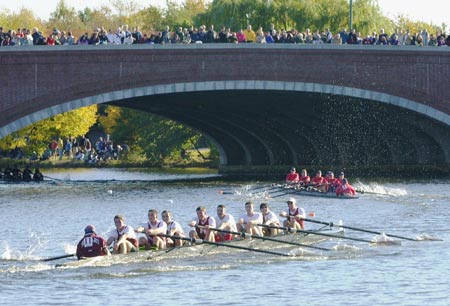
About forty-eight percent of the undergraduates in the College are receiving scholarship support, and we shall have committed more than $63 million for this purpose in 2001-02. Financial aid packages have been enhanced significantly over the past several years, most recently last February. Thus the expected level of ‘self-help’ – which is the amount that students themselves contribute by term-time work (for pay, that is) and by borrowing – has been reduced twice in the last three years, lowering the annual expectation to $3,150 from what would otherwise have been $7,150. Our students are free to determine how they apply these incremental increases in aid. About twice as many students choose to reduce their burden of debt on graduation, as those who choose to reduce their term-time work (which in any case often comes in the form of a research opportunity, an internship, or a career exploration). Four years ago, I bemoaned the actions of some of our peer institutions when they established ‘early decision’ programs. I wrote: “Several universities (among them Stanford, Yale, and Princeton) moved to ‘early decision’ programs (in which an accepted applicant must accept the offer of admission), while Harvard maintained its ‘early action’ arrangement (where an accepted applicant is free subsequently to apply elsewhere, and need not respond until the normal deadline in May). We continue to believe that our applicants are best served by being given time for a measured decision on a matter of such importance.” I was thus delighted recently to read that the President of Yale has questioned the value to students of all early application programs. We shall all be better off if our matriculating students have chosen their university without pressure.
Space. Even though the total number of students in the College remains constant, the Houses are again becoming more crowded. This crunch is a tribute to the quality and desirability of House life, I believe, as well being a consequence of a high local rental market. Some amelioration has come from reducing the number of transfer students, and from claiming more units in the DeWolfe Street buildings for undergraduates. We also explore every option for increasing accommodations in our current buildings when a significant renovation is contemplated. Thus plans are close to completion for major renovation of Wolbach Hall and the Jordans, that will lead to more attractive housing for more students in those buildings.
In three other areas of College life, space issues are a concern. First, there is pressure on performance and rehearsal space for theatrical, musical, and dance groups. While we very much hope that our students may continue to enjoy some use of Agassiz, the acquisition of the Hasty Pudding building is most timely. This building will unfortunately need major renovation (indeed, it will require partial reconstruction before it meets local and state codes), but we expect that it will become a valuable resource for theatrical activity in the College, and continue to be home for the Hasty Pudding Theatricals. Second, we need to provide better opportunities for recreational exercise and fitness activities, and we are now analyzing a commissioned survey of all our athletic facilities to see whether (inter alia) the Malkin Athletic Center can be renovated to satisfy these needs more effectively. Third, we do not have enough space to support the burgeoning number of student organizations.
Finally, and without apology for this subject’s annual appearance, I remain concerned about the number and availability of classrooms. Too many of our large lecture courses are subject to lottery or last-minute relocation, and too many small classes and seminars are taught in rooms that are only marginally appropriate. We continue to upgrade our existing classrooms (Sever 113 was renovated this year, and a number of other rooms in Sever and Emerson have been made multi-media-friendly), but I shall go on pressing departments to liberate ‘their’ seminar and small classrooms for allocation by the Registrar on weekdays until after lunch. When serious consideration has to be given to renting trailers for temporary classrooms during the construction of the Center for Government and International Studies, for example, the time for more aggressive action may have arrived.
Quality of Life. Each year, the Senior Survey provides a consumers’ report on the undergraduate experience. In recent years, there has been a steady increase in satisfaction with House life, from 3.6 (on a scale of 1 to 5) in 1994, to 3.9 in 2001. This rise is surely a tribute to the energy and generosity of the Masters in leading their House communities. Less happy, however, are our students’ views of academic advising. These ratings are not only low but have been falling in recent years, especially in some of the larger concentrations. Only fifty-six percent of last year’s graduating class reported that their academic interests were covered in their advising conversations (which rather makes one wonder what was discussed in these encounters). This index has fallen from sixty-five percent in 1997, and in some large concentrations it is very low (thus one of our largest concentrations stands at twenty-eight percent, down from forty percent in 1997). Overall, student satisfaction with departmental academic advising is not high (3.2), even though some concentrations do much better. Dean Lewis, as chair of the Committee on Advising and Counseling, had hoped that bringing these data to the attention of departments would, through a combination of concern and surprise, lead to some real improvements. Sadly, we have yet to see much change, and this matter remains one of real self-dissatisfaction (v.s.).
On a related topic, Dean Pedersen and Dean Elizabeth Nathans wrote to all members of the Faculty last spring inviting them to become non-resident advisers to two or three freshmen. This letter led to a doubling of the (admittedly rather small) number of faculty in this role. We now have about two hundred freshman advisers (including the President, incidentally), and I hope that more faculty colleagues will indulge in this mutually satisfying activity.
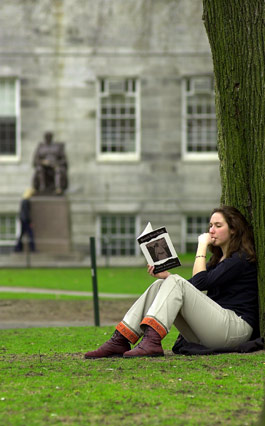
Study Abroad. In recent years, a growing number of faculty and students has asked that we revisit our arrangements for academic work that is done abroad, and the President has urged that we make this matter more of a priority. The last Faculty review dates back to 1982, when the attitude was that there had to be a “special opportunity not ordinarily available at Harvard,” before degree credit could be granted. It is not always easy to demonstrate that an opportunity is so special, and only the most pertinacious students run the gauntlet of our processes for planning and permission. Currently, about nine percent of the College engage in academic work abroad for credit. Recognizing that an international experience is often a valuable component of a student’s undergraduate years, Dean Pedersen and Professor William Fash (chair of the now-expanded Standing Committee on Out-of-Residence Study) commissioned a thorough review that was discussed by the Faculty last November. Informed by that discussion, the Standing Committee will soon bring forward proposals to amend our policies and simplify our procedures for study abroad, and possibly to suggest how we might expand the opportunity for undergraduate experience (as distinct from study for credit) in foreign countries. These proposals will come before the Faculty this term.
Grade Inflation. Last spring, the Educational Policy Committee reviewed the patterns of grades across the College, and concluded “that grade inflation has become a serious problem . . . and that steps should be taken to combat it.” In particular, the committee recognized that with a narrowing range of effective grades (that is, grade compression), members of the faculty find it difficult clearly to signal the difference between work of different quality. The committee worried that having only a small differential between superior and routine work makes it impossible to inform students about the quality of their performance or to motivate them to do their best work. Data on the grades awarded to undergraduates in recent years have now been shared with the Faculty, and departments have been asked to develop definitions and standards for the quality of work that merits a particular grade. The Educational Policy Committee will study these departmental responses and bring forward proposals to the Faculty in due course. The reactions of some other institutions to press coverage of this issue brought to my mind a remark of Maurice Bowra at the Conference of Colleges in Oxford, when an analogous matter came before it. “One can hardly hear oneself speak,” he said, “for the noise of clean linen being washed in public.”
On a separate but related question, the Faculty will soon be discussing the awarding of Latin honors, starting with the century-old (but now surely anomalous) granting of cum laude degrees simply on the basis of grade point average.
The Graduate School
Admissions. The total number of applicants rose again this year, to 7,793, a number that approaches the ten-year high that we saw in 1994. Both domestic and international applications were up, with a thirteen percent rise in the sciences, and an eleven percent rise (reversing the recent decline) in the humanities. The acceptance yield in the humanities was sixty-six percent, and in the social sciences it was sixty-four percent. These are considerably higher levels than in recent years, and they presumably reflect both the more generous guaranteed multi-year packages that were introduced last year, and the more active recruitment strategies of many departments. The position in the natural sciences is not, however, encouraging. The yield overall was only fifty percent, and only two departments achieved yields above sixty percent. Competition for the best students in the natural sciences is particularly severe, and the selectivity (the ratio of accepted students to applicants) is nearly twice that in the humanities and social sciences. Action to improve our position in the sciences is discussed below. The sizes of our inter-Faculty Ph.D. programs remained stable, with the yields being comparable to or higher than those of the collaborating departments of the Faculty.
Financial Aid. The new funds for graduate student support (of $5.7 million annually) provided in 1999 were targeted — to obviously good effect — towards the humanities and social sciences. Over ninety percent of admitted students in these divisions now receive a “full” offer of five years of tuition and fees, and a guarantee of two years of a ten-month stipend, two years of teaching fellowship support, and a stipend for one summer. Not only has this increased Harvard’s attractiveness (as evidenced by the increase in yields), but the lives of our students have been sharply improved. This year, I have been able to authorize another major increase (of about $4 million annually), which Dean Peter Ellison aims to direct towards the science departments, as well as to provide a second summer of support for students in the humanities and social sciences. Although most natural science students are fully funded (the support deriving largely from the research grants of members of the faculty), these students often have heavy teaching expectations early in their careers, they have to choose a research advisor quickly, and the comparative attractiveness of offers from other institutions remains high. Dean Ellison is discussing with each science department the ways in which both its competitive position vis à vis other institutions and the overall experience of its graduate students can be improved. Incremental support will be targeted towards those aspects that are most important for the particular department (for example, to reduce teaching in the first year, to shorten the time-to-degree, or to increase the acceptance yield of the most highly-ranked applicants). In the humanities and social sciences, more of our peer institutions are now providing twelve-month stipends, and we shall continue – as resources permit – to move towards this ideal for all years, as well as to raise funds for a larger number of dissertation fellowships.
New Programs. This year saw the first admissions cycle for the new Ph.D. program in Afro-American Studies, and the yield on our offers of admission was a gratifying one hundred percent. The Faculty also approved the creation of a new program in Biological Sciences in Dental Medicine, admission to which will begin this year. Following the success of the first English Language Program in the summer of 2000 (though it’s much more than just language instruction, being a four-week session of language training, cultural orientation, and an introduction to the teaching mores of U.S. universities), nearly fifty students from fourteen countries who had had no previous experience in an English-speaking college or university attended the second offering of this program last summer. The sense of all participants is that, as a result of this introduction, our foreign students find themselves much more quickly comfortable as students, as teaching fellows, and as members of the graduate community.
Dudley House. It would be improper not to note that this academic year marks the tenth anniversary of the establishment of Dudley House, which offers a range of programs and activities to a widening cross-section of the graduate student body. Many of our peer universities are developing their own versions, often modeled directly on Dudley House. Santayana spoke, a century ago, of his concern that graduate students could become “forlorn atoms,” being members of neither a social nor an intellectual community. He would have been pleased, I think, with Dudley House.
The Division of Engineering and Applied Sciences
In preparation for a Division-wide faculty retreat in May, Dean Venkatesh Narayanamurti asked a number of faculty committees to shape academic plans that will help to determine future growth in the Division’s seven areas: Biomedical Engineering, Computer Science, Electrical Engineering, Environmental Sciences and Engineering, Applied Physics, Applied Mathematics, and Mechanical Engineering. Over the past three years, eighteen new faculty appointments have been made. The Computer Science faculty begins to approach critical mass, and joint searches are underway in several other areas. In collaboration with faculty colleagues from Physics and from Chemistry (and some from other institutions), the Division won a highly competitive $10.8 million award from the National Science Foundation that has led to the creation of a Nanoscale Science and Engineering Center here.
Thanks, amongst other things, to greater faculty outreach, graduate student interest continues to rise. Last year I reported that the applications for graduate study in the Division had risen from 435 to 829. This year, more than a thousand applications were received. The new joint Ph.D. program with the Business School, in Information Technology and Management, attracted 170 applicants. Four graduate students are now enrolled.
The Technology and Entrepreneurship Center at Harvard (otherwise known as TECH) is an extracurricular program to encourage the interaction of technology and business for undergraduates and graduate students. Since its inception in the fall of 2000, about 250 students have participated in its programs, and it is developing relationships with the private sector that are vital for the health of the Division.
Finally, Engineering Sciences 96 (the undergraduate course in which a group of juniors focus as a team on a real-world problem as part of the engineering design curriculum) looked this year at the vexing issue of parking. They analyzed the economic, sociological, and practical aspects of parking at Harvard, and, in a masterfully professional presentation, proposed a number of innovative solutions — from automatic access to robotic parking devices — that are now being evaluated by the University’s Working Group on Parking. The real world, indeed!
The Division of Continuing Education
A total of 19,944 students enrolled in the three major programs of the Division of Continuing Education: the Extension School, the Summer School, and the Institute for Learning in Retirement. The Division is continuing its strategy of investing in technology to enhance its course offerings and to serve its students and faculty. Out of the 554 courses offered by the Extension School last year, twenty-seven were offered via the Internet, and the expanded Distance Education offerings included courses on Greek Literature, Genomics, and Environmental Management. With financial support from the Office of the Provost, the Division is looking at the quality and sophistication of its distance courses, while continuing the qualitative and quantitative evaluation of the experience of ‘distant’ students compared with ‘home’ students taking the same course. The Summer School offered 184 courses that were taken by nearly five thousand students (of whom 717 were active candidates for degrees from Harvard College, Harvard graduate schools, or the Extension School).
In his Annual Report, Dean Michael Shinagel pointed to President Lowell’s goal in 1909 when the Extension School was founded to serve “many people in our community who have not been to college . . . ,” and he concluded by saying “I would like to think that [he] would be gratified to see his local vision gradually becoming transformed into a global one.”
The Library
The first phase of the renovation of Widener is on schedule and on budget, and should be completed this spring. This massive project has brought new lighting, carrels, computer connectivity, fire detection and suppression, and temperature and humidity control, throughout the stacks. Our collections will be better preserved, and students and scholars working in the stacks will be both safer and more comfortable. It is remarkable that the Library has been able to maintain all of its services and has kept its collections accessible, while nearly a hundred construction workers labored daily in the building behind temporary walls. One of the more obvious gains has been that we shall have two magnificent new reading rooms, created within what were originally the interior light court spaces. This past fall, the first of these, the Phillips Reading Room, was opened. Weeks later, the new Periodicals Reading Room was completed in renovated space on the first floor.
The second phase of Widener’s renovation will involve most of the northern block of the building, and will necessarily be much more disruptive to readers and staff. Many services will have to be temporarily relocated, as the new (more logical, and ultimately more convenient) arrangement of spaces and functions is shaped. By 2004, Widener will be ready for its second century as Harvard’s most intensively used research library.
Discussions have begun on how we should organize the dozen or so libraries (in the sciences, the social sciences, and the museums, some of which are part of the Harvard College Library system and some of which are departmental) that lie north of Kirkland Street. As the planning for the North Precinct moves forward, we shall need to consider how best to house these collections and provide related support services. Some of these libraries are used closely with other, non-print, collections (such as in the Herbaria), some are primarily archival (such as the Agassiz collection), some are housed inappropriately (such as Kummel, which inefficiently occupies a fourth floor that cannot stand the weight of library shelving of normal height), and several are departmental science libraries the use of which – for reading, at least — has changed dramatically over the past decade. Hard questions about the best informational support of our teaching and research, and about the best use of space, will have to be asked and answered. Some consolidation of science library functions seems increasingly attractive.
Amidst all the physical renovations and the relentless infusion of more digital information, we prepare for the implementation of a new integrated library access system. Harvard’s existing online catalog, HOLLIS, is close to the end of its useable life, and a new system — Aleph, from Ex Libris — will be installed in July of this year. The new HOLLIS will provide users with a web-based catalog, and improved navigation and linking features. Design, analysis, planning, and training have consumed a great deal of time across all parts of the library, and everyone hopes for a smooth transition. HOLLIS is used for many thousands of searches every day, and this (indeed, any) conversion will have a significant impact on students, faculty, and staff here at Harvard, and users of our libraries from everywhere else.
Capital Projects
Earlier in this letter I have discussed the complex exercise of planning the North Precinct, which will involve construction of the underground garage, followed by urgently-needed laboratories and other academic space. Elsewhere in the text I have mentioned a number of other capital projects, including the Hasty Pudding, the Malkin Athletic Center, Wolbach Hall and the Jordans, and the renovations of Widener. But that is by no means all.
After nine years of discussion and planning (I appointed the Caves Committee, you might remember, back in 1992!), we shall — I devoutly hope —be able to start construction of the Center for Government and International Studies this year. The last major permitting step is to secure the City Council’s approval for the tunnel under Cambridge Street, which will provide a safe and easy connection between the north building (which will be named for Sidney Knafel, whose farsighted generosity allowed us to embark on this project) and the south building (which will be built on the site of the structure presently occupied by University Information Services). Construction is planned to start this spring, with completion of the north building at the very end of 2004 and the south building six months later. The occupants of Coolidge Hall will temporarily relocate to ‘swing’ space at 625 and 1033 Massachusetts Avenue in June of this year. For several years, I have been hesitantly promising that these splendid new quarters would be ready “in the fullness of time.” This prompted one of my colleagues to observe: “The English promise you nothing, but they do keep their word.” It will be worth the wait, I promise.
The Bauer Laboratory, which will house the Center for Genomics Research and some common facilities in the life sciences, will be completed — I’m assured — in time for dedication in early March, appropriately coinciding with the donor’s birthday. About half of this 60,000 square foot building is below grade, under the courtyard now formed by Converse, Naito, Bauer, and Sherman Fairchild.
A first imaginative concept for the new Physical Sciences Building is now being refined, and design development is under way. This building will house the Center for Imaging and Mesoscale Structures, a ‘clean room’ for use by colleagues from both sides of Oxford Street, materials synthesis facilities, and several research suites for faculty from Physics and the Division. Presuming that programmatic and budgetary constraints can be met, we hope to begin construction in the spring of 2003.
The use of transgenic mice has transformed much of biological research in recent years, and, in common with the experience of other universities, our facilities have proved increasingly inadequate. To solve this problem, plans are being developed for an animal facility under the courtyard of the Biological Laboratories. Two underground levels of programmatic and mechanical space will be topped by four feet of earth, which will support major tree growth in the future. The need for this common support facility in the life sciences is now urgent, and we hope to embark on construction as early as this summer. There is of course concern about the disruptive effects of such construction, but a ‘mitigation team’ will work with colleagues in the Biolabs to apply the lessons learned in the creation of the below-grade portions of the Bauer Laboratory.
Finally, as I forecast last year, we are moving ahead with plans to add about 30,000 square feet to the Science Center, and to relieve the departments of Mathematics, History of Science, and Statistics, as well as to provide a proper home for the Collection of Historical Scientific Instruments and to ease the crushed conditions of FAS Computing Services. Construction will not constrain the use of the Science Center classrooms, nor cause the temporary departure of any of the occupants except those in the east wing (along Oxford Street). Building should start this summer.
The danger of a report such as this is that there will be colleagues who will ask: “But what about us?” Let me only say that I have chosen not to write this year about graduate student housing, Robinson, Astronomy, Littauer, 2 Divinity Avenue, the Sackler, the Semitic Museum, the Admissions Office, and a number of other projects, none of which has been forgotten . . .
Financial Status
The Faculty ended FY01 with a $41 million increase in net operating assets, very similar to the increase in FY00. These healthy balances are the consequence of the significant jumps in the endowment pay-out over the past two years, and therefore primarily affect our designated and restricted fund accounts. The Corporation authorized a rise in the pay-out of an unprecedented twenty-eight percent in FY00, followed by an increase of eight percent in FY01. These large increases, following a number of good years in the six and seven percent range, mean that endowment distribution now accounts for forty-one percent of the Faculty’s revenue.
In December 2000, the Corporation authorized another large rise in the endowment pay-out, of twenty-one percent for FY02. We can therefore expect another healthy year when the results for FY02 are reported. Looking further ahead, however, the financial outlook is less robust. The market value of the University’s endowment fell by 2.7% in FY01, and valuations have dropped further since last July. Last month, the Corporation recommended a two percent increase in the endowment pay-out for FY03, the lowest for more than a decade. Moreover, Faculties have been advised to plan on future rises in this low range for FY04 and FY05. These facts, along with the problem that our recent financial comfort is mostly felt in restricted accounts (eighty-five percent of the Faculty’s endowment is formally restricted to specified purposes), color more darkly the apparently rosy picture of this year.
Looking at other indicators, current use gifts fell by four percent (to $37 million) in FY01, and early results suggest that annual giving will fall further in the present fiscal year. Net student revenue seems likely to remain flat, or may even decline if the weakening economy increases the need for student financial aid.
Finally, as I said near the start of this letter, considerable incremental resources have been committed to our rather ambitious goals. Expanding the faculty and providing the additional space for their work will increase both the faculty compensation budget as well as the costs of debt service (to finance new construction) and of operation and maintenance (when the new academic buildings are occupied). All these concerns, as well as the need to continue to improve the support of our graduate students and remain competitive in the arena of undergraduate financial aid, make a persuasive case both for energetic fund-raising, and prudence in making major financial commitments, during the coming year.
* * *
Let me end with the happy recognition of President Summers’ lively interest in matters that are central to this Faculty: the quality of undergraduate education, the need for faculty growth, the support of graduate students, and the planned development of the University. His concern and clarity are already focusing our discussions, as our plans for the growth of the Faculty in the years ahead are refined, and crystallize.
My predecessor as Dean but five, McGeorge Bundy, once commented that “The dream of the ideal college is as beguiling as it is unusual. Thousands of colleges have been started in this country since 1636: probably the vast majority have been opened with the idea that here, at last, the job would be done right.” I shall venture to hope that we’re coming a little closer.
With my best wishes and thanks,
Yours sincerely,
